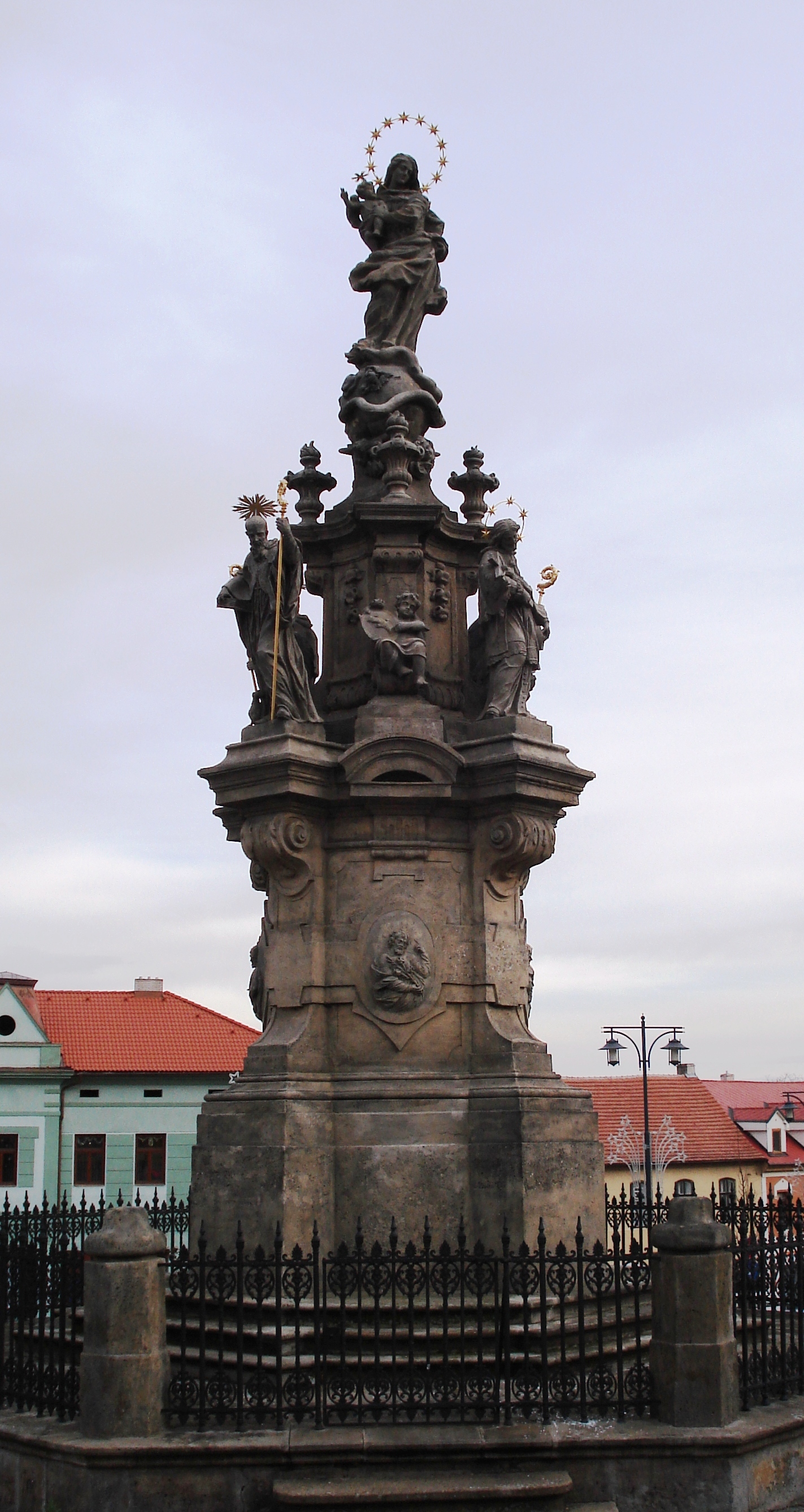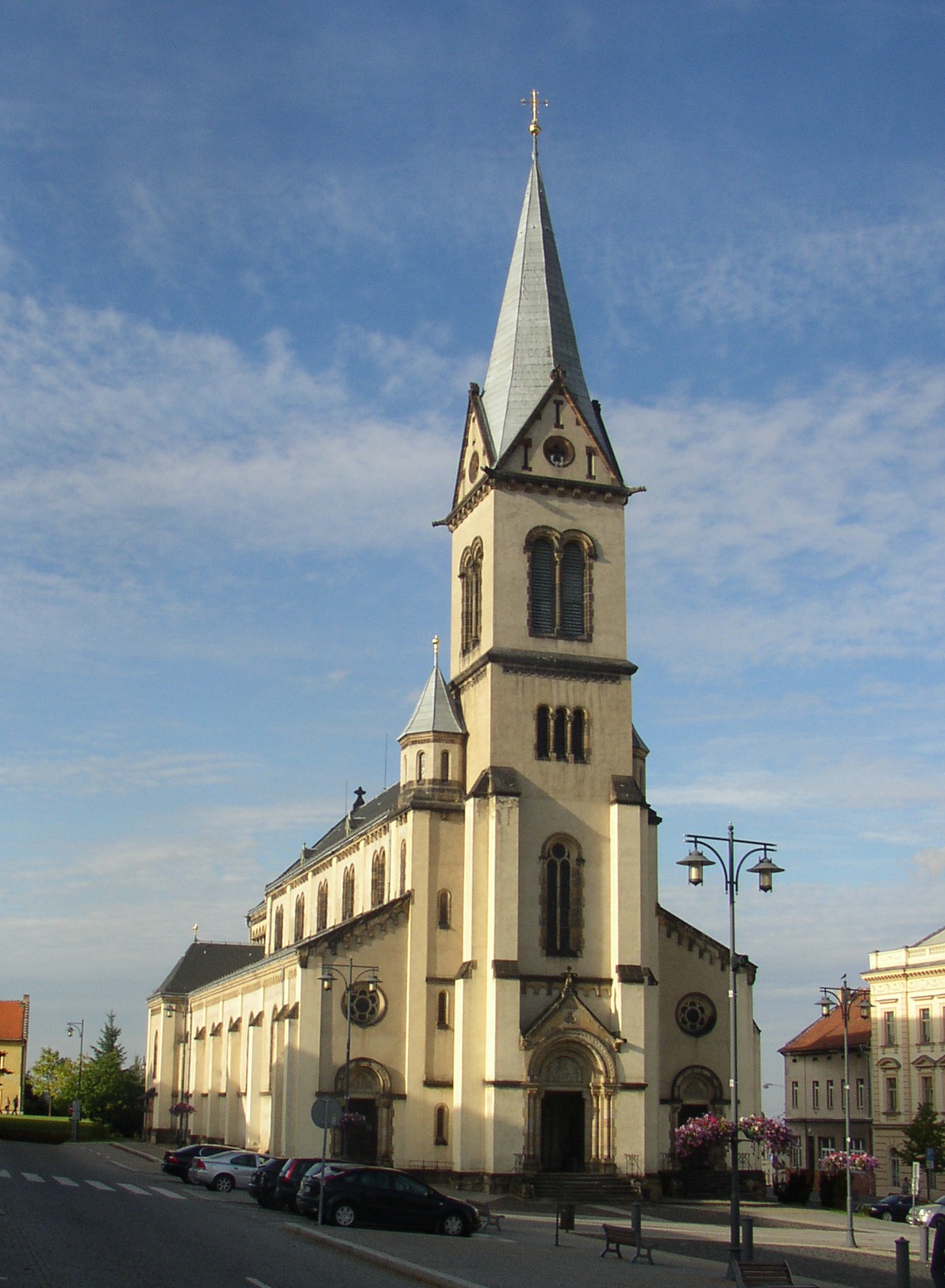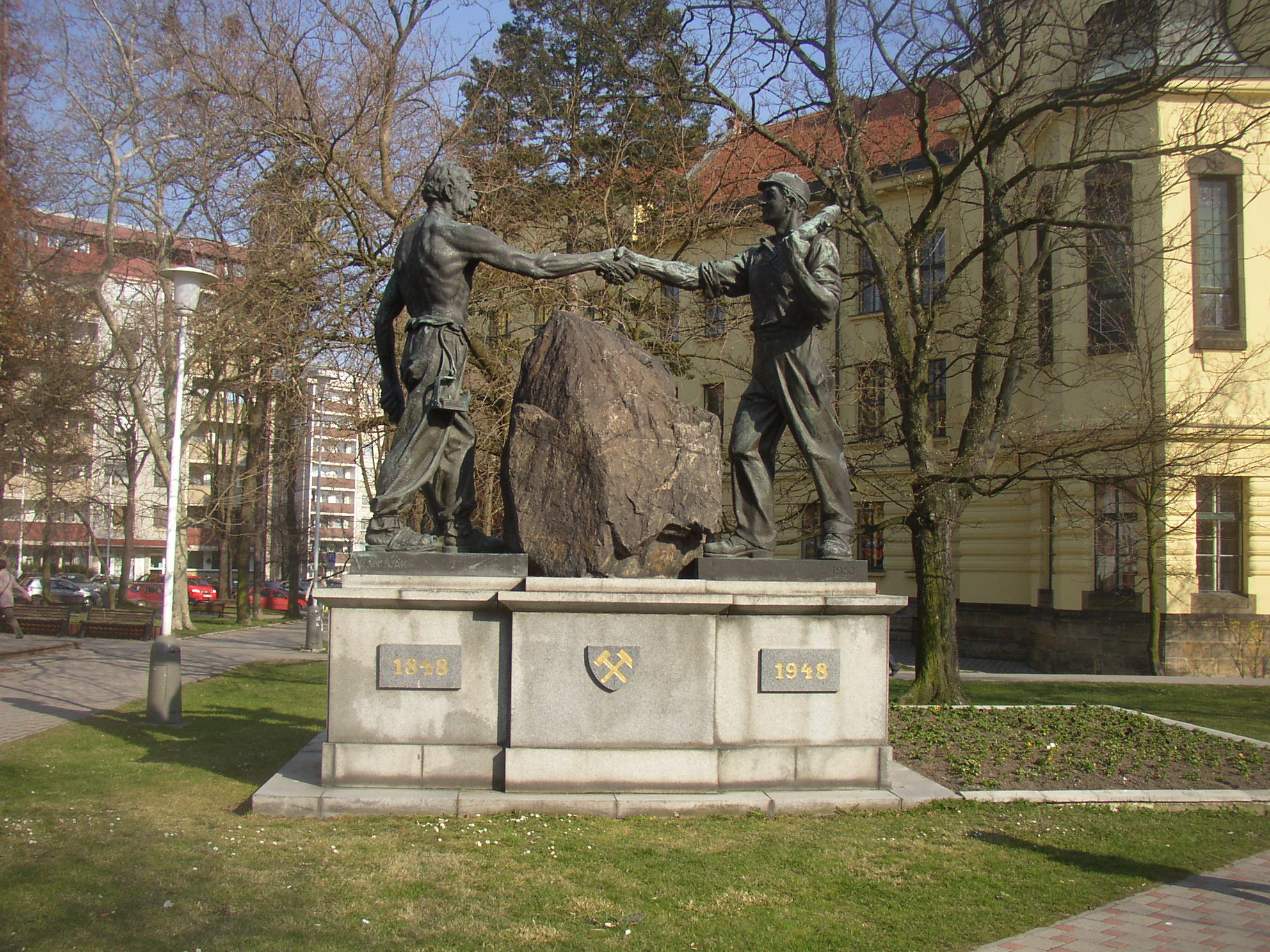A Brief History of Kladno
The earliest written accounts of Kladno date back to 1318. The name itself (related to the word "log") refers to the forest location of the former settlement. For centuries, Kladno was owned by the Kladenske-Kladno family , who even had three fortresses:
- Lower fortress near today's main post office;
- The upper fortress which resembled a castle ; its successor is today’s castle of Kladno; and the
- Wallachian fortress in Ostrovci, in the direction of Rozdel.

The last member of the Kladenske main line was the knight Zdeněk Kladensky (1450-1543), who gave a relatively large estate to the descendants of his deceased nephew Oldřich Ždárský from Žďár (1481-1542). Oldrich’s three sons became the heirs of the Kladno manor when one of the old-timers, Stanislav, died: Jan starší (1502-1578), Jiří (1517-1574) and Zdeněk (1519 - about 1557), the knights of Žďárští z Žďáru.
The new family of owners came to Central Bohemia in the first half of the 15th century from the distant and mountainous Doupov in West Bohemia, where they inhabited the fortress and then the Žďár castle near Doupov. At first, the three Zdar brothers held Kladno together, but in the end the farm was divided and Zdeněk got Kladensko in 1548. After his death 1557, his older brother Jiří owned it.
The new owner of Kladno - Jiří Žďárský of Žďár (1517-1574), remained together with his siblings as a Catholic. He was a good farmer and extended the Kladno estate. He was also an influential courtier of Ferdinand I. Due to this, he managed to raise Kladno’s status from village to a small town . On 22 December 1561, Kladno, among others, was given by the Emperor the right to self-governance, the right to hold two annual eight-day markets (23 April and 14 September), and to organize a one-week market. and the town was awarded a coat-of-arms. In the polished shield, half of the silver eagle came from the emblem of the prince--the family of the Žďárské—while the other half is that of a lynx.
In 1566, The Upper Fortress in Žďárské was reworked on a medium-sized Renaissance chateau, which became the main family residence for the Central Bohemian (or Catholic) line of Žďárské z Žďáru. In the next few decades, townships formed within the not so rigid circle of city walls. These were dominated by three tower gates, together with the castle, the older Gothic church of the Assumption of the Virgin Mary, the neighboring separate bell tower, the town hall, and the chapel of St. Florian. They provided a picturesque silhouette of the town until the first half of the 19th century. The constructed buildings were efforts by the Žďárské family to rebuild Kladno to a decent family residence that would be worthy of their social status and considerable wealth.
I Jiřík’s nephew, and the heir of Kladno since 1574, Knight Ctibor Tiburcí of Žďárský of Zdar (1545-1615) was a successful landlord, dignitary, and Czech governor for Holy Roman Emperor Matthias. During his reign, Kladno experienced more improvements. Ctibor Tiburci built a school in the city and, together with his consort Sibyla Hradišťská of Hořovice, established a hospital. In addition, he also founded a center for common arts craftsmen and supported the economy in his estates in other ways.
After the death of Ctibor Tiburci (in 1615 ), Kladno and the estate was transferred to his only son, Jan Jiří Žďárský of Žďár (about 1581-1626). Unlike his ancestors, he did not engage too much in politics and lived mostly at castles in Kladno, Červeném Újezde or in their ancestral house in Prague.
The second half of the 16th century was favorable for Kladno. The small town had only over thirty houses, but it was the seat of the large dominion of Žďárské, extending mainly east and southeast to the Červenoújezdecko in the province of Hostivice, which also belonged to the family. Although Catholics, they joined the Czech Estates Rebellion in 1619 by the Jan Jan Žďárský from Žďár (about 1581-1626) and his "nephew", the son of his cousin John of Žďárský z Žďáru and Tachlovice (1566-1598), and the heir of the Kladno and red-janitorial landowner Florian Jetrich Zdarsky (1598-1653). At the same time, however, Florian Jetřich, in the spring of 1620, married Pasov with Elizabeth Korona Bořitová of Martinique (about 1603 / 4-1649), the daughter of one of the most influential representatives of the imperial party, Jaroslav Bořita of Martinique, the master of the neighboring Seneca .

At the time of the Czech Estates Uprising, Kladno suffered great misfortune. On the eve of the Battle of White Mountain - on November 7, 1620 - the town was sacked by Polish Cossacks in the Emperor's service - the so-called Lisovciky . They then went with the imperial troops from Rakovník to Prague. There the second day of the imperial unit clashed with the Estates in the legendary White Mountain battle. During the overrun, he also took over the archives of the Benedictine monastery of St. John the Baptist, which the Byzantine abbot Martin Bytomsky had preserved in his cloistered Kladno castle near his Catholic neighbor, the Archives of Knights of Žďár.
After the defeat of the estates, the knights Florian Jetřich Žďárský of Žďár and his relative Kladno Mr Jan Jiří Žďársky had been denied their privelages. But in 1622 , both of them were promoted to Barons. In 1626, Kladno was inherited by Jan Jorge Florián Jetřich. He ascended to the ranks and was liked by the royal court, and two years after the takeover of Kladno (in 1628 ), he was promoted by Emperor Ferdinand II to Reich count , and in 1631 became a representative of the emperor in some of his royal rights. In 1630, Ferdinand II confirmed at the initiative of Earl Florian Jetřich of Zdar the privileges of the city council and increased the number of annual markets to three.
Florián Jetřich (along with his wife Elizabeth Korona Bořitová of Martinique) built one of the first Loretán Chapels in Bohemia in Hájek u Unhošť in 1623 , as thanks for the birth of the son of Franz Adam Eusebius, the second Reich Count of Žďár. Franz Adam Eusebius died in 1670, giving the vast Kládensko- Redenjavezice dominion, including 42 villages, to the lateral Lutheran branch of the Žďárské family, who went under the name of Sahrer von Sahr in Saxony after losing the Estonion uprising in 1621. However, one of the conditions the deceased Count Franz gave was that the Sahrers convert to the Catholic faith and settle again in Bohemia. The Saxon family refused the condition, and after long years of disputes, was paid a decent sum of 53,000 gold in 1688. The original Kladensko-Redenjavezice manor was subsequently divided among five sisters of the late Count.
Marie Maximilian Eva Theresa, Countess of Žďár (1633-1690), did not settle in Kladno, and the Kladno manor and the castle fell, which went on behind their successors.
After the death of the Countess in 1690 , her heirs--her grandfathers from the Count of Lambert-- sold her for 132,000 gold to the Tuscan Grand Duke (1672-1741). The wife of the last Grand Duke di Medici - Giana Gastona , North Bohemian was the owner of large estates and vast neighboring Bustehrad estate, which Kladno wanted to join. Even in her possession, Kladno did not stay long, for the Grand Duke needed the money. Therefore, on July 18, 1705, they sold the Benedictine Kladno manor to the rich and ancient Břevnov-Broumov Abbey.
With the artistic břevnov abbots Otmar Zincke and Benno Löbl , Kladno rose again. Benno Löbl, in cooperation with the renowned Czech architect Kilián Ignác Dientzenhofer, impressed the city with a baroque face, the remains of which are still visible today. The ruined chateau was radically rebuilt and shrunk, the older Early Baroque Florian Chapel rebuilt into an elegant (top-baroque) twin- domed dome with a dome and a magnificent Marian sculpture was erected on the square.
During the Austrian wars in 1741 and 1742 the Břevnov Benedictine monks repeatedly resorted to military actions from the exposed monastery of St. Markéta in Břevnov to Kladno, which was still remote and drowned in the forests. In 1780 the abbot Stephan Rautenstrauch left two new settlements - Stepanov near Krocehlav and Rozdelov , west of Kladno. The new settlers were called from the German -speaking Broumov region . Kladno thrived, but also on the threshold of the 19th century was a small, insignificant town in a sparsely populated rural countryside. When there was a fire in 1814 , it had only about 650 inhabitants.

Industrial City
In 1830, a horse-drawn railway was set up in Kladno, which was designed mainly for timber transport. She led from Bruska (now Prague-Dejvice ) to Vejhybka (today Kladno-Výhybka). It was the second public railway in 1840 . In 1850 the first Lucerna mine was opened, in 1889 Poldi steelworks. Kladno became one of the industrial centers of Bohemia and rapidly grew with the number of inhabitants, its size and importance. The workers' movement was very active here, strikes and demonstrations were taking place, and Kladno also became one of the focal points of the Czech Communist movement. Heavy industry also meant damage to the local environment.
After the fall of socialism, the local industry was damaged by unsuccessful privatization. Vladimír Stehlík, who has taken over the majority of steelworks through his Bohemia Art Company, stabilized the company to become competitive again. Within a few years, however, under suspicious circumstances, the company went to bankruptcy, which meant the closure of a number of operations and the division of the company. The city has been struggling with the ecological and economic consequences even in the recent past, but today Kladno has stabilized and suffers from no major problems.
On 6 November 2014, on the basis of the municipal elections held in the autumn, Milan Volf from the Volby for Kladno group became the mayor of the town . He was replaced by Dan Jiranek of the Civic Democratic Party (ODS).
Landmarks
- The Kladen castle, in the Renaissance core, was given a Baroque appearance during the first half of the 18th century; today the seat of the gallery and the city library
- Related information can also be found in the Kladno Cultural Heritage List .
- The castle from around 1740 lies north of the square of Mayor Paul . Baroque three-winged building with the use of an older building (east wing) with a turret, perhaps according to the design of KI Dienzenhofer . In the western wing is the oval chapel of St. Vavřince, on the ground floor tombstones from the 16th century from the older church. Upstairs tiled stove from the 18th century. Today the seat of the city gallery and library. Behind the castle is a covered wall.
- Chapel of St. Florian in Florian Square from 1751 on the proposal of KI Dienzenhofer. Late Baroque central square building with four apses , a dome, and two towers built on the south facade.
- Marian column from 1741 in KJ Hiernle's Mayor's Square by KI Dienzenhofer.
- Former synagogue from 1885, today church of the Czechoslovak Communist Party in the street plk. Silver.
- Town Hall in the Town Square Mayor of 1899, designed by J. Vejrych with paintings by A. Liebscher on the facade.
- Deanery from 1806, simple floor building with mansard roof.
- Church of the Assumption of the Virgin Mary, neo-Romanesque from 1900, designed by Ludwig Lavbler .
- Former pharmacy in TG Masaryka street, neo-renaissance graffity according to the design by Mikoláš Alše .
- House and printer Jaroslav Šnajdra, Kladno, Saskova street 1495, design by arch. Jaroslav Rössler (architect) (1911)
- Theater , building from 1911, designed by Jaroslav Rössler

Kladno is also home to a sizable Jewish community, making it one of the tour stops for a few kosher tours operating in the Danube area.
Advertise on APSense
This advertising space is available.
Post Your Ad Here
Post Your Ad Here
Comments